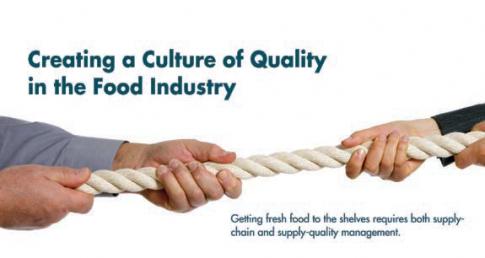
10 Steps to Creating a Culture of Quality
• Guarantee that processes are controlled across the entire supply chain. • Create a risk-based system for gauging and ranking suppliers. • Realize that quality problems always exist. • Implement proper escalation procedures. • Determine the root causes of issues in the supply chain. • Apply effectiveness checks in a closed-loop system. • Ensure companywide corrective and preventive action policies. • Institute a proper process for customer complaint and inquiry management. • Identify customer needs and resolve issues for continuous improvement. • Eliminate the disconnect between C-level management and quality controllers.
|
…
Comments
Add new comment